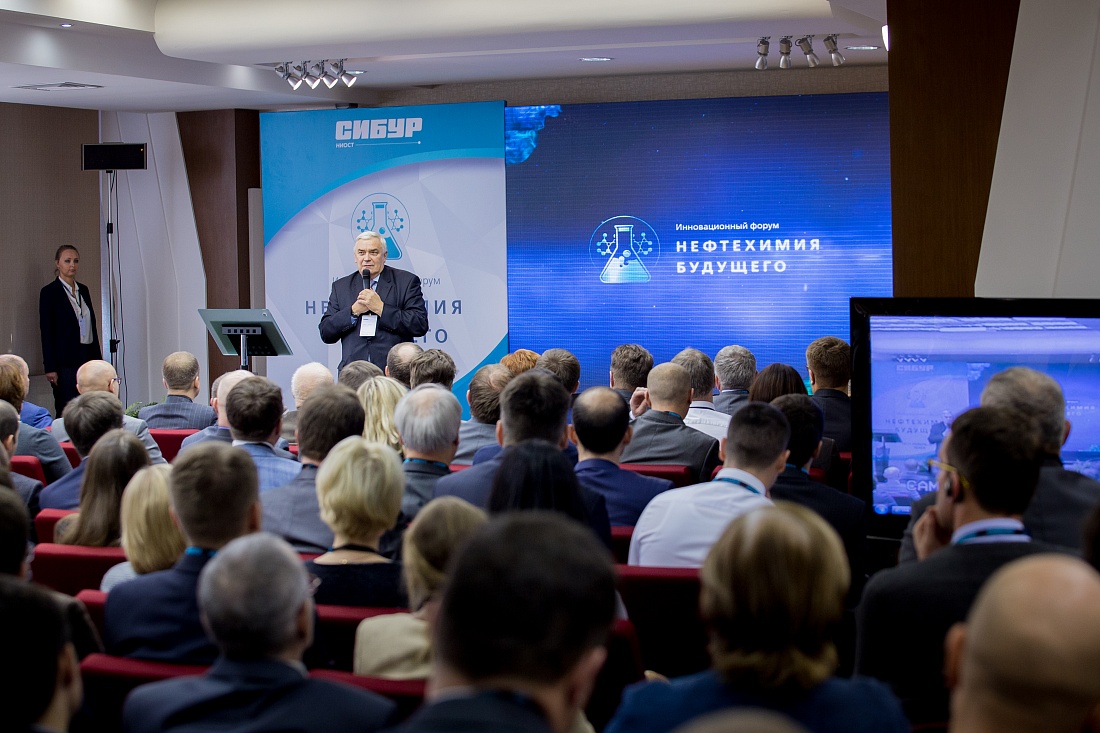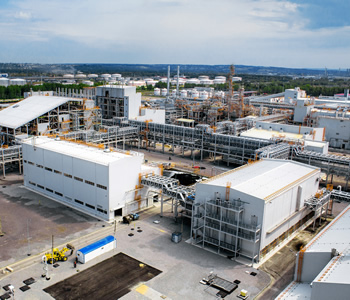Today, petrochemicals are one of the fastest growing industries with demand outperforming the global GDP growth. This trend is likely to persist until at least 2030, said Darya Borisova, Senior Partner at McKinsey, when speaking at Petrochemicals of the Future, a forum that took place at the Engineering Centre of the Tomsk Special Economic Zone (SEZ) in November.
The forum was organised to mark the 10th anniversary of NIOST, SIBUR's chemical R&D centre. NIOST has been involved in developing a wide range of products to pioneer the Russian market, including over 30 grades of polypropylene for nonwoven fabric solutions, injection moulding, and BOPP films. “The idea was to get SIBUR’s employees, representatives of other companies, and researchers together to share views on the future of the petrochemical industry and have a try at predicting what new technologies and products we will see in the years to come,” said Sergey Galibeev, Head of SIBUR’s Joint Development Block.
The forum Petrochemicals of the Future was organised to mark the 10th anniversary of NIOST, SIBUR's chemical R&D centre
Client in focus
A hot topic of today’s economic discussions is the fourth industrial revolution – a digital one. Experts say that over the next several years, we will see robots, augmented reality technologies, artificial intelligence, the Internet of Things, etc. gain traction. These solutions have already proved effective, for example, smart grids are capable of considerably enhancing the reliability of power supply systems by helping to restore power five times faster on average even in case of outages and reduce the affected area at least twofold. In fact, it is electronics and power brought together, a unified system of electricity producers, consumers, and networks that provides online monitoring and control of all the process participants, thus boosting overall efficiency and reliability. These principles are common to other products of tomorrow. According to Klaus Schwab, the founder and executive chairman of the World Economic Forum and one of the main theorists of the fourth industrial revolution, technological advances are changing the way we live, work, and interact with each other.
The potential of innovations in the petrochemical industry is being actively explored (see the link for more details). However, in this area, it is evolution rather than revolution. There is a black swan theory to describe highly unlikely events that nonetheless occur and have a massive impact. While it would be wrong to say that the petrochemical industry is fully predictable and controllable, black swan events are fairly unlikely here. “Let us suppose that a breakthrough process for producing molecules has been discovered. You can just imagine the amount of investments needed to fully replace all the steam crackers globally – it is hundreds of billions or even trillions of US dollars,” says Sergey Galibeev. Besides, even in the best case scenario, the journey fr om idea to implementation (cracker design, piloting, and construction) takes fr om 8 to 10 years as far as the core chemical processes are concerned. Thus, we are most likely to see an increase in polyolefin production capacities to meet the increasing market demand. A key project here will be ZapSibNeftekhim, Russia’s largest petrochemical facility under construction.
Producers require ever cleaner, non-allergenic materials for medical supplies or examination gloves
Again, there are white swan events that are expected by everyone. Above all, this means the expansion of the polymer grade range. Here, the development trajectory will mainly depend on consumer demand, be it in construction, agriculture, consumer goods, automotive, or retail industry. Past experience shows that this link is the key to best products ever. Pavel Skrylev, Head of Special Chemicals for Plastics Production Department in Russia and CIS at BASF, gave as an example the partnership between BASF and Adidas. In 2013, the Energy Boost powered by Infinergy running shoes featuring a thermoplastic polyurethane (TPU) sole were released. Each party can promote cooperation. In this case, BASF had the Infinergy technology in place and Adidas came up with the idea to utilise it.
Another driver for the development of the petrochemical industry is the social dimension. Urbanisation and the increase in consumer well-being will ultimately drive the consumption of healthcare products, footwear, apparel, automotive industry products, and many other. That will stimulate the demand for petrochemical products, for example, synthetic rubbers, and the feedstock requirements are only increasing as the years go by. Larisa Bondar, Head of Marketing SR & TPE at SIBUR, says that this trend is already visible. Tyre producers have become more sensitive about choosing their feedstock in an attempt to improve the properties of their products (speed lim it, safety, or noise level). As another example, producers require ever cleaner, non-allergenic materials for medical supplies or examination gloves.
An ocean of opportunities
Availability of feedstock supplies will also continue to be of critical importance going forward. "Special attention should be given to methane. Already now there are certain technologies converting methane into key molecules of the base chemicals industry, for example, methanol, which can be excellent feedstock for products with higher added value," said Sergey Galibeev. Another option is a wider use of renewable and bio-based feedstocks. This has already become a strong trend in the medium-tonnage and speciality chemicals industries, wh ere such technologies can be quite competitive. Researchers have found bacteria that can produce the required molecule in one go, whereas in traditional chemistry scientists need several iterations to achieve the same result. Yet, there are still some snags as regards the extraction of base petrochemical molecules from bio feedstock.
“In traditional petrochemistry, you can get a considerable variety of products from a limited set of raw materials. It is quite different with biotechnologies: there is a wide choice of raw materials, but you can only extract a small number of polymers out of them,” commented Lars Evensen, Director of Business Development at Norner. On top of that, there is an issue of clearing the bio feedstock from oxygen, a voluminous element. According to Darya Borisova, the production of 40 mt of polyethylene from bio feedstock requires a land plot the size of Germany and a water body 1,5 times bigger than the Geneva Lake. Yet, Sergey Galibeev believes that these technologies can become more relevant in the future as they keep improving. “75% of the Earth is covered by the ocean, which contains a wealth of biomass feedstock. If researchers come up with an effective technology to convert it into, say, ethylene, this will be a breakthrough,” he says.
In 2013 Adidas released the Energy Boost powered by Infinergy running shoes featuring a thermoplastic polyurethane (TPU) sole
Dangerous myths
Another important challenge facing the industry is a stronger focus on environment. An increasing number of people have concerns about product safety and advocate mitigation of the environmental impact and an extensive use of renewables. Lars Evensen cited a recent letter from children to the 100 global majors requesting the introduction of plastic-free packaging as a good example of this popular concern. In response, the forum participants said that people are very often guided in their judgements by myths, rather than credible information. For example, many think that paper packaging is more environmentally friendly than the plastic one. But it rarely occurs to them that the pulp and paper industry consumes a great amount of fresh water and electric power and generates a whole lot of wastes. Plastics production is more environmentally friendly. In addition, polymers are less voluminous, which translates into lower waste emissions during their transportation. Another example was given by Miron Gorilovsky, President of Polyplastic. “CO2 emissions during the production of a steel pipe are seven times higher than those for pipes made of polymers,” he said.
However, Lars Evensen believes that there are still ways to make the industry even more environmentally friendly. Many in Russia forget that plastic is the kind of material that can be recycled indefinitely. For example, in Norway 90% of polymer wastes are used for production purposes. McKinsey believes that recycling is one of the most promising industries going forward. According to the company's estimates, by 2050, 30% of polymers will be produced from recycled materials. That is why Darya Borisova thinks it is high time the petrochemical companies focused on recycling.
On the other hand, according to McKinsey, eternal plastic and potential development of substitute materials may lead to a slowdown in the demand for traditional polyolefins. In this case, the success of petrochemical businesses will mainly be driven by the range of their product mix, quality of customer relations, and loyalty of the general public.
Download PDF








